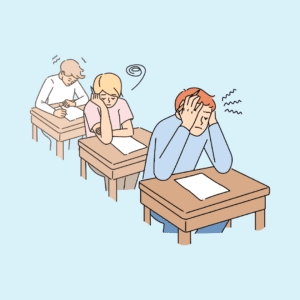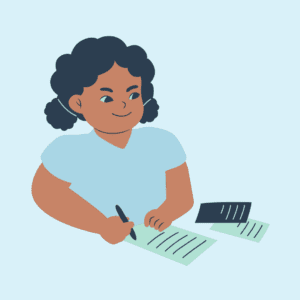We all want to say that we are great at what we do. I believe we all do our best job. But, no matter what our experience level is, situations arise and we question ourselves: Did I follow best practice? Did I do everything I could? Am I missing something? Do I know what I’m doing? Suicide prevention is often one of those areas that leave us with these thoughts. It is a sensitive and delicate situation. We need to be knowledgeable and have an action plan in place. Rather than give you tips this month, we thought it would be best to provide you with resources to help navigate through these challenging situations. Below, the team of Confident Counselors shares their best resource suggestions for suicide prevention.
When you have students in danger of self-harm, it is essential to have an evidence based plan implemented by a trained team. The following suggestions do not replace training or school policies, but can be used by a school crisis team to ensure the correct systems are in place.
The American School Counselor Association specifically speaks to suicide prevention in the “Serious or Foreseeable Harm to Self or Others” section of the 2016 ASCA Ethical Standards for School Counselors. I recommend using these standards as an advocacy tool for your role in suicide prevention and as a reference when you have a question about best practice. ~ Rebecca at Counselor Up
The Columbia Suicide Severity Rating Scale is a well known scale and used as a screener for at people at risk. Part of the Lighthouse Project, the CSSR is the most evidence based screener being used today. It’s simple and easy to use with free video trainings you can do on their website. We use this screener as part of our school’s crisis plan. You should not, however, use a screener if your school does not have an intervention plan to go along with it, and despite the level of risk, parents should be notified.
SAMSHA -Substance Abuse and Mental Health Services Administration- is a government website devoted to providing resources on prevention and treatment of mental health and substance abuse issues, as well as providing information about different hotline numbers available to individuals in crisis. In addition, you can download their free apps to your phones or ipads
NIH -National Institutes of Health has some great information about signs and symptoms, risk factors and ideas to help those in emotional pain.
To understand best practices and to help your school implement its own suicide prevention policies, I recommend taking the ASCA certification course, Mental Health Specialist. There is a fee for this course ($99 ASCA members/ $249 non-members) and you can earn 5 CEUs/50 Contact Hours.
Carol @ The Middle School Counselor
Suicide prevention in schools should be a team effort and not fall to any one staff member. The National Association of School Psychologists (NASP) has an in-depth resource, Preventing Youth Suicide, that is a great starting point. I recommend using the American Foundation for Suicide Prevention’s A Model School Policy on Suicide Prevention. This resources is the collaborative work of NASP and ASCA, is evidence-based, designed for schools, and focuses on a team response. – Laura @ Social Emotional Workshop
The Cornell Research Program on Self Injury and Recovery has a helpful resource for school personnel to aid in the development of protocol for dealing with instances non-suicidal self-injury. – Keri @ Counselor Keri
The School Mental Health Project, UCLA Center for Mental Health in Schools has a wealth of resources to support student mental health. I find this practice resource helpful when working with students who have possible suicidal thoughts: Suicidal Crisis –The Sunny Sunshine Student Support Store
Knowledge is power. The Jason Foundation is dedicated to raising awareness of youth suicide. Jason Flatt was a young man who told many friends that he was going to kill himself. Tragically, nothing was done about it. His family decided to start this non-profit organization in his memory. The Jason Flatt Act is law in 19 states, mandating educators to complete 2 hours of youth suicide awareness and prevention training each year in order to be able to be licensed to teach. With a simple online request, they will send you free lesson plans, DVD’s with a powerful video of scenarios, powerpoint presentations on a CD, and cards with a 24 hour 1-800 number to hand out to all students after the lesson. Free professional development resources for teachers is also provided. ~ Brandy @ The Counseling Teacher
The National Alliance of Mental Illness (NAMI) is an excellent resource for skills training and support. They offer a wealth of free programs including:
- a Helpline (M-F 10am-6pm ET) at 1-800-950-NAMI or text “NAMI” to 741741
- in person and online monitored support groups, such as Ok2Talk,
- educational classes and school personnel presentations,
- downloadable fact sheets and mental health posters, such as “Want to Know How to Help a Friend? A Student Guide to Mental Health.”
The SOS (Signs Of Suicide) Program through Screening for Mental Health offers a FREE online gatekeeper training for middle school and high school staff. This 90 minute training provides information about mental illness, risk and protective factors for suicide, and ways to recognize and respond to warning signs of suicide and self injury. CounselorChelsey
Dr. Carolyn Stone, ASCA Ethics Chair and a leading legal consultant for school counseling nationwide, weighs in on legal liability issues for school counselors involved in crisis with this super informative ASCA School Counselor magazine article: Suicide Contracts, Assessments and Parental/Guardian Notification: Err on the Side of Caution.












Excellent resources for suicide prevention and intervention, all in one spot.
[…] Suicide Prevention Best Practices […]